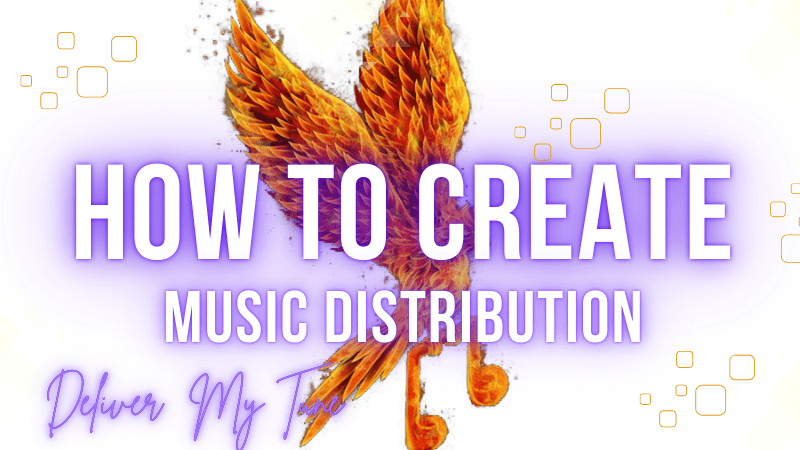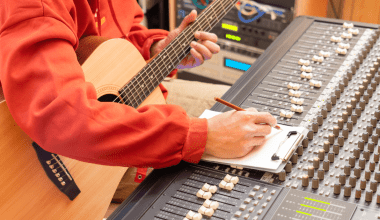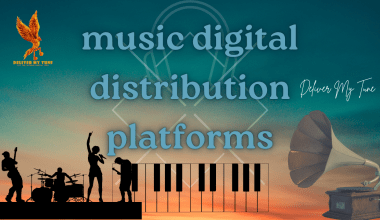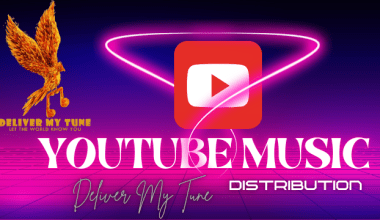Creating and handling music distribution might seem overwhelming, but it is essential for independent artists aiming to share their music with the world. In today’s digital era, music distribution has evolved significantly. Artists can now reach listeners globally without needing a record label, thanks to digital music distribution platforms. Whether you’re a new artist or an experienced one looking to grow your audience, learning how to create effective music distribution can elevate your music career to the next level.
In this guide, we’ll dive deep into understanding how to create music distribution channels, pick the right platforms, and navigate the process successfully.
Understanding Music Distribution
Music distribution is the process of getting your music available across different platforms where listeners can access it. It involves digital platforms like Spotify, Apple Music, YouTube Music, and others that bring your work to global audiences. With the right distribution strategy, you ensure your music is readily available and easy to discover.
Key Aspects of Music Distribution
- Availability: Ensuring your music reaches major digital platforms.
- Royalties: Earning from plays, downloads, and licensing.
- Analytics: Understanding how listeners are engaging with your music.
The modern era allows for seamless, instant distribution, meaning artists can retain control and reap the benefits without middlemen taking substantial cuts.
Types of Music Distribution
In understanding how to create music distribution, it’s essential to know the different types available. These types generally include:
- Physical Distribution: This is traditional, involving CDs, vinyl records, and cassettes. Although it’s less popular, some genres and listeners still appreciate physical copies.
- Digital Distribution: The most widely used form, digital distribution involves online platforms like Spotify, Amazon Music, and others, enabling global reach with minimal effort.
- Sync Licensing Distribution: For artists who aim to feature their music in movies, TV shows, or commercials, sync licensing is essential. It allows you to earn royalties every time your song is used commercially.
Most independent artists rely on digital and sync distribution to maximize reach and revenue.
Why Independent Artists Need Music Distribution
For independent artists, music distribution is vital because it allows them to build a fanbase, earn royalties, and grow their brand without signing restrictive contracts with labels.
Key Benefits:
- Global Reach: Distribute your music worldwide with minimal costs.
- Brand Control: Maintain full ownership and creative control over your work.
- Royalties: Earn money from streaming, downloads, and licenses.
- Data Access: Track how your music is performing across different platforms.
By learning how to create music distribution channels effectively, independent artists can take charge of their careers, using data to refine their strategies and maximize impact.
How to Create a Music Distribution Strategy
A music distribution strategy is your roadmap to successful release. Start by setting clear objectives about what you hope to achieve, be it gaining new listeners, increasing revenue, or building an engaged fanbase.
Steps to Craft a Distribution Strategy
- Identify Your Target Audience: Know who listens to your genre and where they hang out.
- Set Clear Goals: Decide on your release goals, such as charting on Spotify or reaching a certain number of streams.
- Choose Platforms Wisely: Not all platforms are necessary. Pick the ones best aligned with your target audience.
- Create a Promotion Plan: Plan your promotion on social media, email newsletters, and collaborations.
- Analyze and Adjust: Track performance post-release and refine your approach based on data insights.
Having a solid music distribution strategy can significantly boost your chances of reaching more listeners effectively.
Choosing the Right Music Distribution Platforms
There are many music distribution platforms available today, and each offers unique features. To choose the best platform for your needs, consider the following factors:
Key Considerations:
- Reach: Look for platforms that distribute to major streaming sites.
- Royalty Rates: Ensure they offer fair revenue splits.
- Additional Services: Some platforms provide additional perks like sync licensing, cover art creation, and analytics.
- Cost and Plans: Many platforms offer tiered plans. Choose one that fits your budget and needs.
Popular Platforms for Music Distribution:
- Deliver My Tune – Distributes to over 100 platforms, including Spotify, Apple Music, and YouTube Music.
- DistroKid
- TuneCore
- CD Baby
- Amuse
Step-by-Step Guide to Distribute Your Music
Distributing music can be simple if you follow a structured approach. Here’s a basic step-by-step guide on how to create music distribution for your tracks:
Step 1: Choose a Distribution Platform
Start by selecting a reputable platform that aligns with your goals and budget.
Step 2: Prepare Your Tracks
Make sure your audio files are high-quality (WAV format is recommended). Ensure they’re mastered professionally.
Step 3: Create Cover Art
Most platforms require cover art in high resolution (minimum 3000 x 3000 pixels). Ensure your cover art is visually appealing and represents your music style.
Step 4: Set Metadata
Fill out your track’s metadata, including song title, genre, and release date. Ensure all metadata is accurate as it helps listeners find your music.
Step 5: Submit for Distribution
Upload your track, cover art, and metadata to the distribution platform, and submit your song for distribution.
Step 6: Promote Your Release
Promotion is critical. Share on social media, pitch to playlists, and use targeted ads if possible.
Best Practices for Independent Music Distribution
Maximize the impact of your music distribution by following best practices tailored for independent artists.
- Optimize for SEO: Use keywords in your song title, description, and tags to improve discoverability.
- Pitch to Playlists: Contact playlist curators to get your songs featured.
- Leverage Social Media: Engage with fans on Instagram, Facebook, and YouTube.
- Utilize Analytics: Platforms like Spotify for Artists provide insights on listener demographics. Use this data to tailor your next release.
- Stay Consistent: Regular releases keep listeners engaged and build anticipation.
Challenges in Music Distribution and How to Overcome Them
Music distribution can present challenges, especially for new artists. Here are some common hurdles and how to address them:
- Limited Budget: Use free or affordable platforms like Amuse.
- Discoverability: Focus on SEO and playlist pitching to increase visibility.
- Time Management: Automate as much as possible, from social media posts to distribution schedules.
- Competition: Stay unique and authentic to stand out among countless releases.
Future of Music Distribution for Independent Artists
The future of music distribution is likely to be shaped by advances in AI and blockchain technology. Innovations like AI mastering and blockchain-based royalty tracking are making it easier for artists to produce and distribute high-quality music independently.
Frequently Asked Questions
Q1: What’s the best platform for music distribution? A: The best platform varies based on your needs. Deliver My Tune offers a comprehensive solution with additional support, covering over 100 platforms.
Q2: How much does music distribution cost? A: It depends. Platforms like DistroKid offer yearly subscriptions, while others charge per release.
Q3: Can independent artists earn good royalties? A: Yes, with the right distribution strategy and promotion, independent artists can earn significant royalties.
Q4: How do I promote my distributed music? A: Utilize social media, pitch to playlists, and consider ads on platforms where your audience resides.
Conclusion
Understanding how to create music distribution is essential for every independent artist. By following the right steps, picking suitable platforms, and executing a solid strategy, you can distribute your music globally, reach new audiences, and build a sustainable music career. While the journey can be challenging, the rewards are worth the effort.
Related Articles:
For further reading, explore these related articles:
- Online Music Distribution Comparison: Choosing the Right Platform for Your Music
- How Music Distribution Works: A Comprehensive Guide
- Understanding ISRC Codes and Their Importance in Tracking and Distributing Your Music
For additional resources on music marketing and distribution, visit Deliver My Tune.






